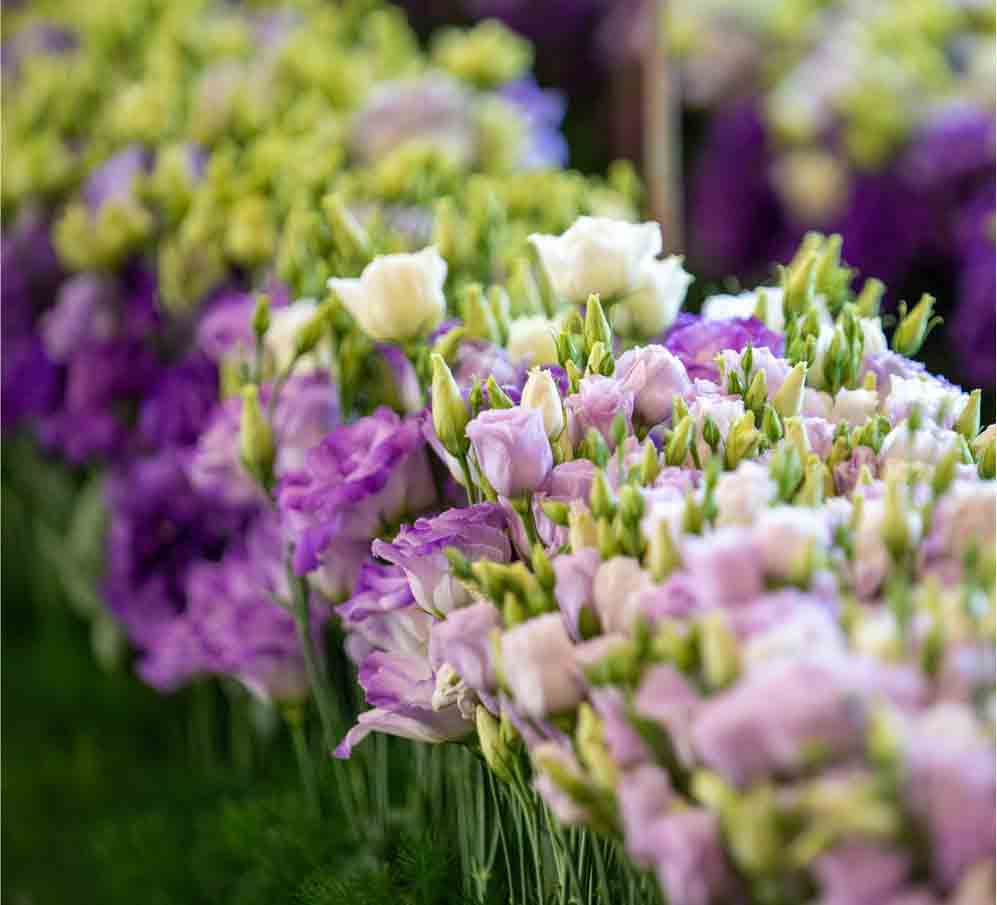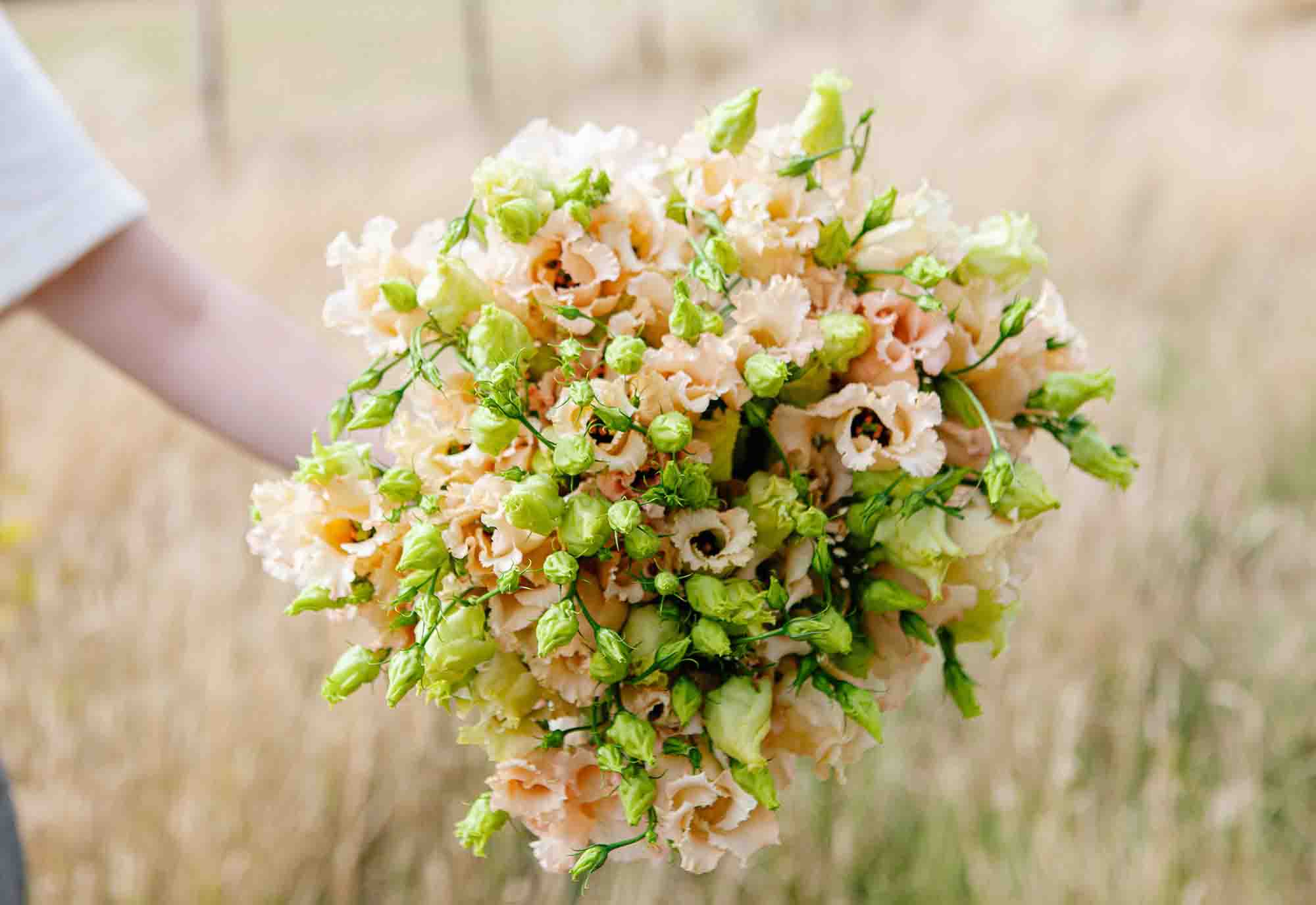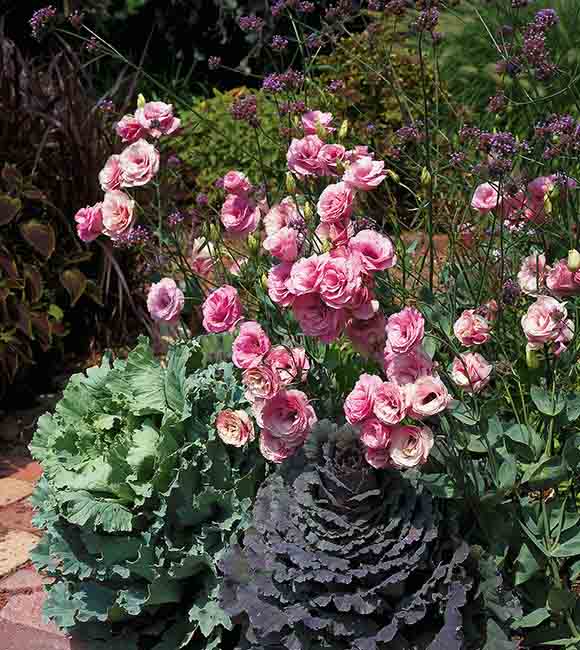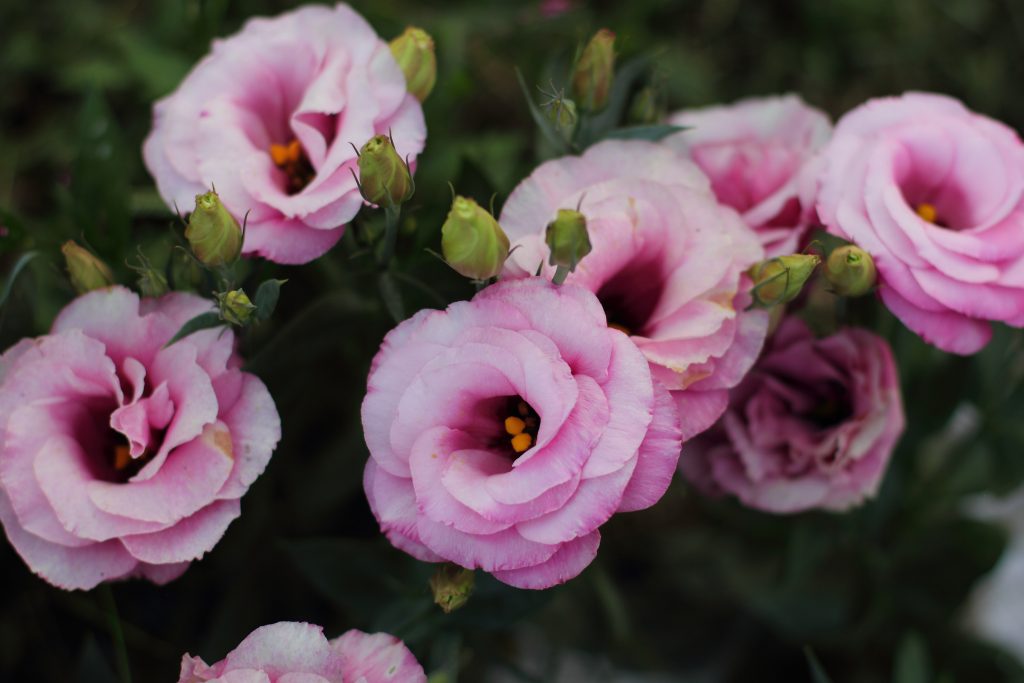Lisianthus Profile
Written by Joy
Nov 06 2020

Lisianthus is a perennial plant of the Gentianaceae family with a height of 30-100 cm. The leaves are opposite, broadly elliptic to lanceolate, almost sessile, the leaf base is slightly embracing the stem; the leaf surface is blue-green. The pistil and stamen are obvious, the bracts are narrowly lanceolate, and the petals are arranged in a tile-like shape. Lisianthus has a variety of colors, including single and multiple colors, with single petals and double petals.
Lisianthus morphological characteristicsLisianthus growth habit and growing environment and distributionLisianthus efficacy and roleLisianthus cultivation

Lisianthus morphological characteristics
Lisianthus is cultivated for one or two years. Opposite leaves, gray-green. Oval, entire.
Lisianthus growth habit and growing environment and distribution
Lisianthus loves a warm, humid and sunny environment. More drought-tolerant, intolerant to water and humidity. The suitable temperature for growth is 15-28℃,The night temperature cannot be lower than 12°C. In winter, the temperature is below 5℃, and the leaves are rosettes and cannot bloom. If the temperature exceeds 30°C, the flowering period of lisianthus is significantly shortened. Lisianthus has strict water requirements and likes to be moist, but too much water is also detrimental to the growth of roots. If the water supply is insufficient, the stems and leaves grow thinly and bloom early. Lisianthus is more sensitive to light, and long-day light can help stem and leaf growth and flower bud formation. Loose, fertile and well-drained soil is required, and the pH value should be 6.5-7.0, and continuous cropping should not be avoided. Eustoma flowers need to go through a period of low temperature and bloom in the high-temperature stage. The natural flowering period of lisianthus is May to July. Annual flowering can be achieved under certain facilities and cultivation techniques.

Lisianthus efficacy and role
The lisianthus plant is elegant, with fresh and elegant colors. The lisianthus potted plants are used to decorate the room, balcony, or window sill, showing a sense of freshness and elegance. If you cut out a few purple lisianthuses and add white lilies, it is very decent for flower arrangement.Lisianthus cultivation

Latest Updated
- Benefits of Bugleweed - 7 Science-backed Health Benefits
- Bugleweed Dangers & Side Effects - Is It Poisonous?
- How to Plant Evergreen Trees - What You Should Know
- When to Plant Evergreens - Grow Guide for Evergreen Trees
- 12 Wonderful Evergreen Shrubs for Your Garden
- 12 Popular Evergreen Plants with Pictures for Beginners
- When And How To Prune A Lilac Bush Like a Pro
- How to Grow & Care for Lilac Vine (Hardenbergia Violacea)
- Japanese Lilac Tree (Syringa Reticulata) Care & Propagation Guide
- Shumard Oak Pros and Cons - What to Know
Popular Articles
- Winter maintenance of Antirrhinum Majus
- How to Grow Terminalia Mantaly Tree
- How to Grow and Care for Crossostephium Chinense
- How to grow Antirrhinum Majus in spring
- Peristeria Elata (Dove Orchid) Profile: Info & Care Guide
- Underwatered Snake Plant (Sansevieria Trifasciata) - Signs And How To Fix
- How to Care for Brazilian Jasmine Plant (Mandevilla Sanderi)
- How to Grow & Care for Graptopetalum Purple Delight in Summer
- Rosa Chinensis (China Rose): Plant Growing & Care Tips
- How to Care for Baby Sun Rose (Aptenia Cordifolia)